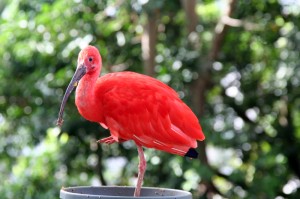Join us this week as we take a closer look at the Pyramids of Love at Moody Gardens! Learn about the intricate relationships and courtships that take place in the animal kingdom throughout the week on our blog and look for our trivia questions on Facebook & Twitter for chance to win Aquarium and Rainforest tickets. Make sure to stop by February 14-16 for Valentine’s Day themed animal enrichment and presentations at the Aquarium and Rainforest Pyramids.
LOVE IS IN THE AIR…LAND AND WATER
As you enter the Rainforest Pyramid, you not only enter a living and breathing Rainforest, but you also get a glimpse of the relationships taking place between the many different species of animals and plants. Whether it’s an animal in the water or the air, take the time to observe how they interact with each other and you’ll see that there’s plenty of love going around. Here’s a few to lookout for during your next visit:
 Pygmy Slow Loris
Pygmy Slow Loris
We all have lovers that are crabby at some point
Female lorises tend to be a bit crabby and aggressive during mating season, usually lunging and vocalizing at males who are trying to court. Love is love, no matter if you’re happy or sad.
 Poison dart frogs
Poison dart frogs
Talk about a ‘match’ made in heaven
Both males and females are territorial and will wrestle other individuals and possible love interests for the title.
Jacksons Chameleons
Do you have the right moves?
When the male has found a love interest and wants to court her, he simple just dances. This isn’t just any type of dancing – you have to have the right moves! Head bobs and pop-locking is what really peaks the females interest. If you don’t have the right moves, the male will be met with a disapproving color change and an unreceptive female. Talk about getting shut down!
Dancing the night away
How do these suave males win the hearts of the female companions? The dance floor of course. The “promenade à deux,” is a dance in which the male grabs the female’s pincers and then proceeds to dance around seeking the approval of his spicy dance partner. Once approve has been met, they then continue their salsa to find a suitable area in which to copulate.
Ants and bees don’t have anything on this queen.
Lots of men refer to their mates as queens, mostly as a term of endearment, but for Damaraland mole rats, it’s the truth! This species of mole rat resemble the social structure of that of bees and ants. Females are not born queens though; they have to fight for the title from other females. Like ants and bees, all mole rats have a certain job in the colony. You have your lovers, your fighters, your gatherers, and your builders. All our partners deserve the royal treatment every once and a while.
 Egyptian Fruit Bats
Egyptian Fruit Bats
The apple never falls far from the tree
After a mother gives birth to her young, they carry them around on their underside until the pup is able to roost on its own. Although this isn’t the time that the parents kick the kids out of the house. Usually the offspring stay in the same bat colony in which the parents already live in. Love isn’t always about finding your one and only – sometimes its family!
 Vampire Bats
Vampire Bats
Dinner time love
Vampire bats have a bad rap about being filthy blood suckers, but actually, they are some of the sweetest animals around. When it comes to helping your mate, friend, or neighbor in the colony, these bats win! If one bat in the colony isn’t able to find food at feeding time, no worries, they’ll just head back to the colony and snuggle up to a friend for dinner. Vampire bats provide an altruistic behavior (you do something for me and I’ll do something for you) to their neighbor; they regurgitate blood so that they can live on to the next feed. Without this behavior many individuals would die off very fast in the colony. Fewer mates means less offspring. No doggy bag needed. Check Please!
The best parents EVER!
What makes this species such a great family household to grow up in? These mothers and fathers are among the few monogamous rodent species in existence today. Both parents raise their young together, and if one mate dies, the other will find love again. Usually waiting until another caller comes investigating the home burrow.
Love isn’t always colorful
When two individuals find themselves in love, they don’t go through glorious color changes like other fish species, they turn almost completely black. This isn’t so much as a warning, but is theorized to be a mode of discouraging other individuals from courting. Think of it as a clear sign of “Hey, I’m taken.”



.jpg)

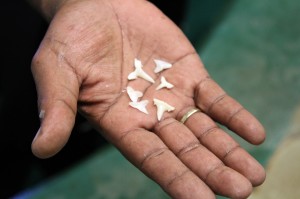 Sharks’ teeth are adapted for what they eat. Sharks like the great white and tiger shark have triangular teeth with jagged edges. This keeps hold of larger fish and animals, tear chunks of meat or slice through a turtle’s shell. A sand tiger’s teeth, on the other hand, are long and narrow which make them look frightening, but in fact these types of sharks are not very aggressive. The shape of their teeth is ideal for grabbing a hold of prey. However, the whale shark has very small teeth and it’s not used for biting because they simply filter their food.
Sharks’ teeth are adapted for what they eat. Sharks like the great white and tiger shark have triangular teeth with jagged edges. This keeps hold of larger fish and animals, tear chunks of meat or slice through a turtle’s shell. A sand tiger’s teeth, on the other hand, are long and narrow which make them look frightening, but in fact these types of sharks are not very aggressive. The shape of their teeth is ideal for grabbing a hold of prey. However, the whale shark has very small teeth and it’s not used for biting because they simply filter their food.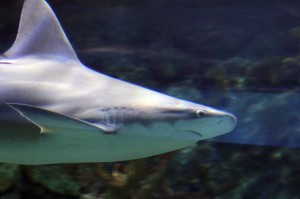 Coloration and patterns play an important role in identifying a shark. Their special marks allow them to camouflage perfectly into their environment. Mako sharks, for example, inhabit tropical and offshore water and are normally a bluish color. On the other hand, the nurse shark has a tan pigmentation ideal for hiding on the ocean’s floor. Tiger sharks can be identified by their stripes and leopard sharks for their spots.
Coloration and patterns play an important role in identifying a shark. Their special marks allow them to camouflage perfectly into their environment. Mako sharks, for example, inhabit tropical and offshore water and are normally a bluish color. On the other hand, the nurse shark has a tan pigmentation ideal for hiding on the ocean’s floor. Tiger sharks can be identified by their stripes and leopard sharks for their spots.
 In early 1999 I found myself in Taiji, Japan working on a marine mammal acquisition for the Beijing Aquarium. The conservation ethics surrounding “The Cove” are another story deserving its own chapter at another time. While we were working at a Dolphin encounter resort on the outskirts of Taiji, we were staying in a fishing community just to the north called Katsuura. Every day we drove past the waterfront in Katsuura through the bustle of activity around the fishing markets. On one of my few days off, I visited the market to see what was being caught and auctioned. The sheer number of top level predator fishes that were laid out in organized stacks in the football-field-sized warehouse space was amazing. Tuna, mackerel, billfish and ocean sunfish made up the bulk of the daily catch. There were also several piles of shark fins stacked 4’ high and spreading over perhaps a 12’ diameter area. I couldn’t locate any shark bodies in the entire market area, just three or four large heaps of fins.
In early 1999 I found myself in Taiji, Japan working on a marine mammal acquisition for the Beijing Aquarium. The conservation ethics surrounding “The Cove” are another story deserving its own chapter at another time. While we were working at a Dolphin encounter resort on the outskirts of Taiji, we were staying in a fishing community just to the north called Katsuura. Every day we drove past the waterfront in Katsuura through the bustle of activity around the fishing markets. On one of my few days off, I visited the market to see what was being caught and auctioned. The sheer number of top level predator fishes that were laid out in organized stacks in the football-field-sized warehouse space was amazing. Tuna, mackerel, billfish and ocean sunfish made up the bulk of the daily catch. There were also several piles of shark fins stacked 4’ high and spreading over perhaps a 12’ diameter area. I couldn’t locate any shark bodies in the entire market area, just three or four large heaps of fins.

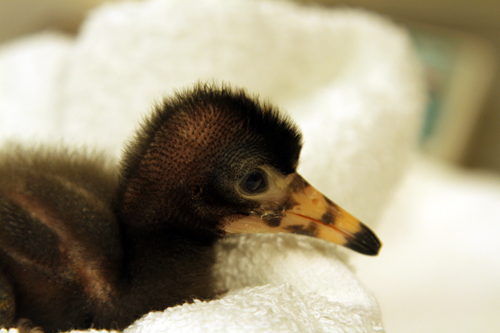
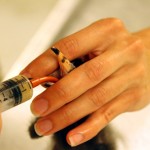 This endearing and very vocal chick loves its gruel, which is a liquid diet made up of fish, shrimp, pellets, water and vitamins which is hand fed five times a day. Biologists are hoping to introduce him to whole fish this week.
This endearing and very vocal chick loves its gruel, which is a liquid diet made up of fish, shrimp, pellets, water and vitamins which is hand fed five times a day. Biologists are hoping to introduce him to whole fish this week.